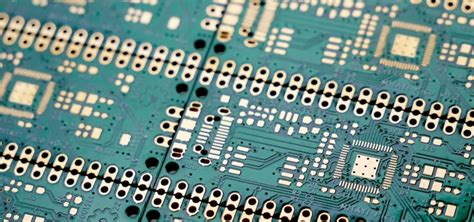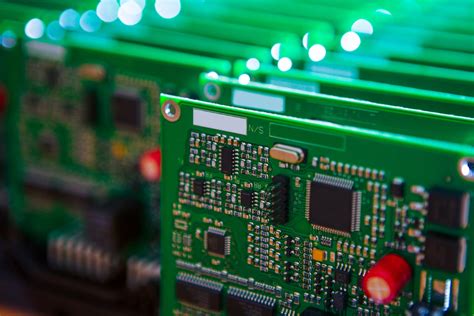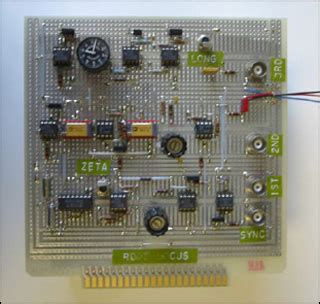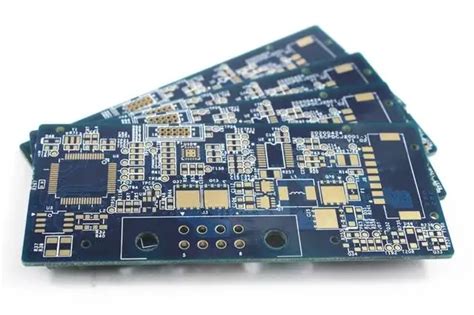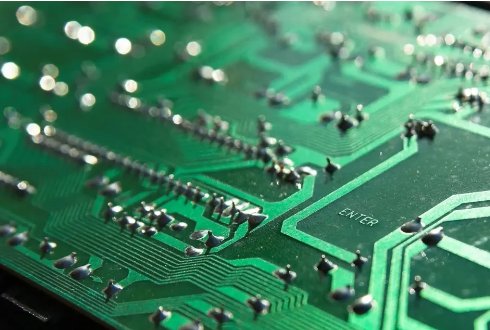Understanding Blank PCB Board Prices in Today’s Market

Key Takeaways
When navigating the realm of blank PCB board prices, it’s essential to understand how various elements interconnect within the PCB manufacturing ecosystem. The pcb manufacturing cost can vary significantly depending on multiple factors. These include the choice of materials, the complexity of the design, and production volumes. For instance, opting for high-quality substrates or intricate designs can increase costs substantially.
Furthermore, aware buyers should consider the role of pcb manufacturing companies in determining these prices. Companies often have different pricing strategies influenced by their operational efficiencies and scale. Comparing quotes from various manufacturers is a practical approach that can save you money while ensuring you meet your project’s specifications.
Additionally, market demand fluctuates based on trends in technology and consumer electronics, which directly affects blank PCB pricing. A surge in demand typically results in higher prices due to increased competition for resources and materials.
To illustrate this impact, here’s a simplified table summarizing potential cost influences:
| Factor | Impact on Price |
|---|---|
| Complexity of Design | Higher complexity increases cost |
| Material Quality | Premium materials raise costs |
| Production Volume | Larger volumes often reduce price |
"Understanding these dynamics will empower you to make better purchasing decisions as you traverse this competitive market," remarks an industry expert.
By promoting awareness of these variables, you’re better positioned to discern fluctuations in pricing and select a dependable source for your blanks boards. Keeping abreast of industry trends will also facilitate more informed decisions as you engage with the pcb manufacturing business landscape.

Introduction to Blank PCB Boards and Their Importance
Blank PCB boards serve as the backbone of numerous electronic devices, making their understanding crucial for anyone engaged in the electronics sector. When discussing pcb manufacturing, these boards play a fundamental role in the framework that supports electrical components. The pcb manufacturing cost is influenced by various factors, including material quality, board complexity, and the techniques used by pcb manufacturing companies. As you explore the dynamics of this billion-dollar pcb manufacturing business, you will recognize that your choices can significantly impact both functionality and cost-effectiveness. Properly analyzing these elements helps you make informed decisions when sourcing blank PCB boards, allowing you to navigate fluctuations in pricing while ensuring that your products meet industry standards. Understanding your needs and keeping abreast of market trends are essential for maximizing value in your investment within this competitive landscape.
Key Factors Influencing Blank PCB Board Prices
When evaluating blank PCB board prices, it’s essential to understand the myriad of factors that contribute to their manufacturing cost. One of the primary influences is the intricate design specifications demanded by various applications. Each circuit board project may vary in complexity, requiring PCB manufacturing companies to invest in advanced technology and skilled labor, which in turn affects the overall cost. Additionally, fluctuations in the market for raw materials play a significant role; materials such as copper and laminates can vary widely in price based on global demand and supply chain dynamics. Moreover, the scale of production can also impact costs significantly. For instance, larger volumes typically allow PCB manufacturing businesses to reduce costs through economies of scale, as they can spread setup costs over more units. Don’t overlook the importance of regional factors; some areas may have lower labor costs or be more conducive to efficient production processes, affecting the PCB manufacturing cost regionally. Understanding these dynamics not only helps you better navigate pricing but also empowers you to engage more effectively with suppliers and make informed purchasing decisions.

The Manufacturing Process Behind Blank PCBs
The pcb manufacturing process begins with the selection of high-quality materials, which are crucial for achieving durability and performance in the final product. Initially, manufacturers assess the specifications required for the boards, including substrate selection and layer counts. The pcb manufacturing cost is heavily influenced by these materials, as different substrates can significantly vary in price. Once materials are chosen, the design phase incorporates computer-aided design (CAD) software to ensure precision in layout and functionality. This step is essential as it determines how effectively the blank PCB will meet your intended applications.
Following design approval, pcb manufacturing companies proceed to etch the circuit patterns onto copper-clad laminates. This stage requires sophisticated equipment and technology to ensure accuracy and minimize waste. After etching, processes such as drilling holes for components and applying a solder mask follow. These steps are where you might first notice fluctuations in pricing; advanced techniques or higher-quality finishes often incur additional costs but result in better performance.
Finally, once the boards have undergone quality assurance tests to confirm their integrity and reliability, they are ready for shipment. Understanding this intricate process gives you valuable insight into how various factors impact pcb manufacturing prices. As you navigate this landscape, recognizing how specific processes can affect costs will empower you to make informed decisions when investing in blank PCBs for your projects or businesses.
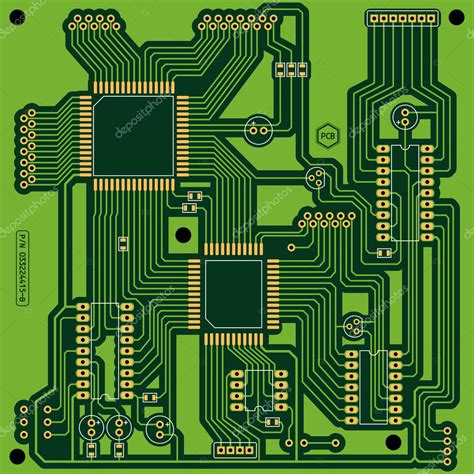
Market Demand and Its Impact on Pricing
Understanding market demand is crucial for grasping the dynamics that dictate blank PCB board prices. As you explore the landscape of the PCB manufacturing industry, you’ll find that fluctuations in demand have a direct impact on pricing strategies employed by manufacturers. Increased demand for specific types of PCBs often results in higher prices, particularly when associated with trending industries such as consumer electronics, automotive technology, and medical devices. You should consider how PCB manufacturing companies react to these shifts; they may alter their production processes or pricing structures to align with current market needs. Additionally, the supply chain and availability of raw materials need attention, as any disruption can lead to soaring manufacturing costs, further influencing market prices. By keeping a close eye on pcb manufacturing costs, you can make more informed decisions when engaging with suppliers or choosing your own strategy within the pcb manufacturing business realm. This understanding will ultimately allow you to navigate pricing challenges effectively and potentially secure better deals within this ever-evolving market.

Navigating Price Fluctuations in the PCB Industry
In the ever-evolving landscape of the PCB industry, understanding how to navigate price fluctuations is crucial for both buyers and manufacturers alike. Factors such as pcb manufacturing processes, supplier relationships, and technological advancements significantly influence pcb manufacturing costs. As you engage with different pcb manufacturing companies, it’s important to be aware that market demand can create variability in pricing. For instance, during peak seasons, the demand for PCBs may increase, driving prices upward, while more favorable periods can yield lower costs. Additionally, changes in material availability or advancements in production techniques can further impact these fluctuations. By keeping an eye on these dynamics and understanding your requirements thoroughly, you can make more informed decisions that maximize the value of your investment in the pcb manufacturing business. Recognizing how macroeconomic factors play a role in pricing will empower you to navigate this billion-dollar industry effectively and strategically plan your purchases according to current market conditions.
Tips for Buyers: Getting the Best Value for Your Investment
When diving into the world of blank PCB boards, understanding how to maximize your value is crucial. The pcb manufacturing landscape is filled with various options, making it essential for you to evaluate multiple pcb manufacturing companies. Start by researching their reputation, production capabilities, and previous client reviews. Pay attention to the pcb manufacturing cost as it can vary significantly among providers based on technology and material quality. Look for companies that provide a transparent breakdown of their pricing and are willing to discuss costs openly. Additionally, consider the scale of your order—the larger your order, the more likely you are to negotiate a better deal due to reduced per-unit costs. Always ensure that you are not compromising on quality for the sake of lower prices; it is better to partner with a reputable pcb manufacturing business that aligns high standards with competitive pricing. By being well-informed and proactive in your approach, you can successfully navigate this billion-dollar industry while ensuring that you secure the best value for your investment in blank PCB boards.
Future Trends in Blank PCB Pricing
As the pcb manufacturing industry continues to evolve, several trends are anticipated to shape the future pricing of blank PCB boards. One of the primary drivers will be the advancement in pcb manufacturing technologies, which can potentially lower the pcb manufacturing cost while improving product quality and reliability. Additionally, as emerging technologies such as Internet of Things (IoT) devices and electric vehicles gain traction, the demand for customized PCBs is expected to surge. This increase in market demand will likely influence pricing dynamics, compelling pcb manufacturing companies to adapt their pricing strategies based on capability and production efficiency.
Moreover, sustainability has become a significant priority within the pcb manufacturing business, leading companies to adopt eco-friendly practices. This transition may initially increase costs; however, as tech evolves and sustainable materials become more mainstream, it could stabilize prices in the long term. Furthermore, geopolitical factors and global supply chain issues could continue to affect availability and cost structures.
Thus, staying informed about these trends enables you to better navigate fluctuations in blank PCB prices while aligning your procurement strategies with future market conditions. By understanding these dynamics, you can make more informed decisions that ensure you not only get superior quality PCBs but also maximize your investment potential in this growing industry.
Conclusion: Making Informed Decisions in the PCB Market
In navigating the competitive landscape of the PCB market, understanding the various elements that contribute to blank PCB board prices is crucial for your success. You need to consider the influence of pcb manufacturing practices, as well as insights from reputable pcb manufacturing companies that can help you gauge costs effectively. One significant aspect is the pcb manufacturing cost, which varies depending on factors such as materials, technology, and labor involved in production. Additionally, as you engage with your chosen pcb manufacturing business, it’s essential to stay informed about market demand trends that can affect pricing structures and availability of products. By doing thorough research and taking into account these key factors, you position yourself to make educated purchasing decisions that align with your budget and project requirements, ultimately enhancing your investment in this multifaceted industry.
Conclusion: Making Informed Decisions in the PCB Market
In conclusion, understanding the nuances of blank PCB board prices is essential for making informed decisions in today’s competitive landscape. You should consider the various factors that influence pcb manufacturing costs, such as material expenses, production techniques, and labor costs. Engaging with pcb manufacturing companies can provide you with insights into the current trends in pricing and availability. Being aware of pcb manufacturing business practices can also help you negotiate better terms and optimize your investment. Additionally, keeping an eye on market demand will allow you to anticipate changes in blank PCB board prices, helping you secure the best possible deals. By armoring yourself with knowledge about these dynamics, you position yourself to make choices that will enhance your operational efficiency and profitability in this billion-dollar industry.
FAQs
What are the main factors affecting blank PCB board prices?
The price of blank PCB boards can vary significantly due to several factors, including raw materials, pcb manufacturing costs, and technological advancements in the pcb manufacturing business. You should consider that fluctuations in material costs can directly impact the overall pricing.
How do I find reliable PCB manufacturing companies?
To discover trustworthy pcb manufacturing companies, you can research online reviews, seek recommendations from industry peers, and evaluate their certifications and experience. Many companies provide portfolios showcasing their past work, which can be helpful in assessing their capabilities.
What should I consider when calculating PCB manufacturing costs?
When determining pcb manufacturing costs, you should account for labor, materials, and overhead expenses. Additionally, the complexity of your design and volume of production will also play a crucial role in calculating these costs.
How can I ensure I’m getting the best value for my investment?
To get the best value for your investment, compare multiple quotes from different pcb manufacturing companies, ensuring that you assess not just price but also quality and delivery timelines. Establishing a long-term relationship with a manufacturer may also lead to better pricing over time.
Are there future trends influencing PCB pricing?
Yes, emerging trends such as increased demand for more advanced electronic devices will likely impact blank PCB prices. Consumers are leaning towards flexible circuitry and quick turnaround times, prompting pcb manufacturing businesses to adapt their pricing strategies accordingly.

